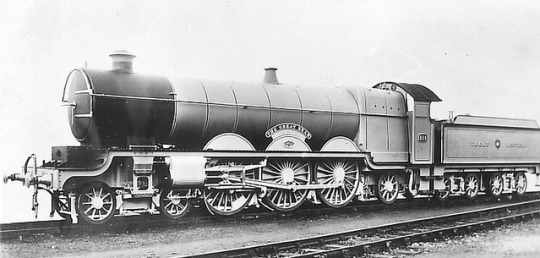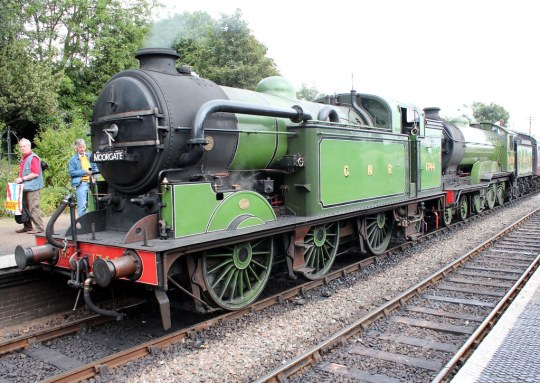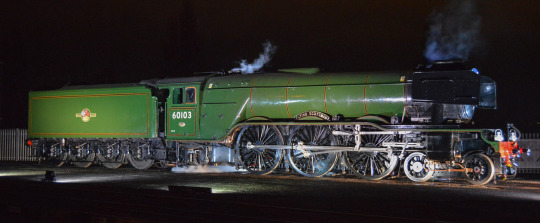#Boiler Service North London
Text
Boiler Repair Service North London: Ensuring a Warm and Reliable Home
When it comes to boiler repairs, our dedicated service team has the experience, expertise, authority, and trust to provide you with top-notch solutions. From diagnosing common boiler issues to delivering long-lasting repairs, we are committed to ensuring your home remains warm and comfortable. Don’t let a malfunctioning boiler disrupt your daily life; contact our boiler repair service today and experience the difference.
#Boiler Repair North London#Emergency Boiler Repair North London#Boiler Service North London#Boiler Repair Service North London#Landlord Gas Certificates North London
0 notes
Text

#At EPH Contractor#we believe in delivering high-quality plumbing#heating#and boiler services at competitive prices to residential and commercial sectors#We cover all areas in North London#East London#West London#Hertfordshire#and most parts of Essex. Call or messages us for more information : 07570757362 or#https://ephcontractor.co.uk/#...#EPHContractor#ResidentialPlumbing#PlumbingContractor#PlumbingServicesUK#PlumbingServices#flooring#services#electrical#package#Plumbing#uk politics#critical role#princess diana
5 notes
·
View notes
Text

Henry and the Great Western Fiasco, 1919
This drawing that I made on December of last year was based on Henry's old shape and who built him. To pair up with the drawing, I also made a headcanon concerning Henry's old shape and who built him and it just so happens to be related to a failed Pacific locomotive that a certain railway experimented on.
H E A D C A N O N T I M E .
The Great Bear

Our story begins in 1908 in Swindon Works when Chief Engineer George Jackson Churchward designed an experimental engine that can haul passenger and freight trains. This came in the form of Number 111, also known as The Great Bear. The engine turned out to be a failure due to some issues with its boiler, which resulted in the engine being converted into a Castle-class Locomotive in January 1924. Churchward was distraught at his optimistic ambition being turned into a failure, but when he had heard news that Scottish-born Chief Engineer Sir Nigel Gresley was going to design a Pacific Express Locomotive, he remarked with "What did that young man want to build it for? We could have sold him ours!"
Churchward vs. Gresley
Illustrations of Henry's old shape in the Railway Series featured a brass-tip on his funnel which was common on locomotives of the Great Western Railway meaning that the original illustrator Reginald Payne associated Great Bear to Henry. Hints are present as to why I made Henry a Great Western engine.

Seeing a brass-tipped funnel on Henry looked very odd to me. Doesn't it remind you of the Great Western Railway?
During the design process of the now famous A1 Pacifics of the London and North Eastern Railway, an unknown engineer sent out thieves to steal plans for Gresley's express locomotives. People say that the engineer was old Mr. Churchward who still could not recover from the failure of his experimental Pacific. A Blueprint was stolen, but it wasn't the latest design that Gresley had drawn up, but an earlier design that he drew up in 1915 when the Great War was at full swing. The drawing had a boiler that was quite small which made Gresley think about the consequences. However, a certain Swindon Engineer decided to build it to satisfy his needs. That man was George Jackson Churchward.
And so, the engine was built under the orders of Mr. Churchward. He had placed William Stanier as the technical advisor of his latest Pacific project. Stanier recommended that he redesign the engine and add a larger firebox, but due to Churchward's decisions it didn't happen. The engine was finally built in 1919 and was given a name - and that is Vanguard. However, Factory Workers would often call the engine Henry.
When Henry rolled out of the factory, he was given a nice healthy batch of Welsh Coal for testing. Great Bear wasn't pleased when Henry rolled out and thought that he'll outperform him. When the first trial run came, Henry was steaming properly while pulling a heavy train consisting of twelve coaches jam-packed with passengers. Great Bear envied him, but when Henry was put into regular passenger service, the same problems from Great Bear finally showed up when he was given a batch of regular coal. With this, Henry was deemed a failure and was planned for scrapping. However, when a Railway Director was buying a locomotive (specifically a 4-4-2 Atlantic), he received a Pacific-type locomotive in the form of Henry. His remarks were quite enraged and profanity-filled.
"I wanted an Atlantic. But that stupid, son of a bitch gave me that instead!"
— Sir Topham Hatt I, 1922
Henry was planned to be scrapped indeed, but when the Director saw Henry's sad expression, he had no choice but to give him a chance. The rest is history.
Mr. Stanier's Chance
After Henry's infamous crash with the Flying Kipper in January 1935. He was sent to Crewe Works to be rebuilt entirely. The engine was skeptical until he met a familiar face that he had seen years ago back when he was in Swindon.
"When I first met Henry at Crewe, I was very surprised to see him in such a beaten-up state. I had intentions in redesigning him prior to being built, but that impatient old man [Churchward] did not listen. Seeing him like this made me want to redesign him entirely, but would cost me plenty of money to create a new boiler and frame for him, as well as a new tender. Instead, I went for the cheaper alternative and turned him into a Black 5 instead of what was supposed to be a 'prototype' for the Coronation class."
— Sir William Stanier, 1948 Interview
Sir Topham Hatt did not have enough money to completely convert Henry into a Princess Royal or redesign him entirely. Instead, he decided to turn Henry into a Ten Wheeler. His smokebox and front wheels remained, but the trailing wheels were discarded. Everything else were parts from the Black 5, including his Tender.
"Being rebuilt entirely was a huge blessing for me, and many people sent me 'Get Well Soon' cards and flowers while I was at Crewe. My smokebox and wheels were retained while many of my old parts were scrapped or perhaps reused as spares. I now felt better after that fix up at Crewe, and I managed to share stories with Mr. Stanier, whom I first met in Swindon when I was in my old shape."
— Henry, 1963 Interview
During his rebuild, he met several Princess Royals that were being maintained. Mr. Stanier explained to him that he was the inspiration into building a Pacific locomotive.
"Seeing those beautiful engines made me want to cry, since they told me that I was the inspiration for their design. The Princess Royals were meant to be the success that Mr. Churchward wanted, but failed to achieve. I do envy him and wished that he had the patience to make his dream come true. Great Bear would have seen those beauties."
— Henry, 1963 Interview
The rest is history...

And as for the laconic version or the TLDR:
Henry was designed by George Jackson Churchward as a second attempt for a Pacific Locomotive for the Great Western Railway.
#artists on tumblr#concept art#thomas and friends#thomas the tank engine#ttte thomas#steam#steam locomotive#steam engine#age of steam#steam train#ttte henry#headcanon#the railway series
53 notes
·
View notes
Text
The engines as different basis (EoSR but built different) - 1
(Tender engines as tank engines, vice versa)
From No. 1 - 6 (Thomas, Edward, Emily, Henry, Gordon, James)
NWR 1 Thomas (formerly LBSCR 307, SR 2307)

Class: London, Brighton, and South Coast Railway (LBSCR) Class C3 Horsham Goods
Previous Owners: London, Brighton, and South Coast Railway; Southern Railway; British Railways (Southern Region)
Built: August 1906
Real-life Withdrawal: May 1949 (never received a BR number)
Designer: Douglas Earle Marsh
Builder: Brighton Works
Bio:
Thomas is the first tender engine purchased by the NWR, after the withdrawals of the original NWR 1 - 6 (the last one being in 1925). The NWR had believed that they wouldn't need any tender engine power until the withdrawal of NWR 1 in 1925.
NWR 2 Edward (formerly W&SR 5)

Class: Dublin, Wicklow and Wexford Railway (DW&WR) 52 class; North Western Railway (NWR) Class S-W52
Previous Owners: Wellsworth & Suddery Railway
Built: 1893
Real-life Withdrawal: n/a
Designer: William Wakefield
Builder: Sharp, Stewart and Company (Glasgow, Scotland)
Bio:
Edward was commissioned by the Wellsworth and Suddery Railway. His design was altered so that he could run on standard gauge rails. When the merger occured, he was passed down to the NWR, along with Emily, and the NWR attempted to rebuild him so he could handle the new jobs. This did not work out, resulting in Edward having poor steaming issues. He was swapped with Emily, working lighter and fewer jobs.
NWR 3 Emily (formerly GNR 1009 and W&SR 6)



Class: Great Northern Railway (GNR) Class H1 Stirling Tank; North Western Railway (NWR) Class S-S1 Stirling Tank
Basis (Inspiration): GNR Stirling Single A3, GNR G1, and B&ER 4-2-4 tank engines
Previous Owners: Great Northern Railway; Wellsworth and Suddery Railway
Built: 1882
Real-life Withdrawal: n/a
Designer: Patrick Stirling
Builder: Doncaster Works
Bio:
Emily is an experimental tank engine version of the GNR A1, A2, and A3 Stirling Singles, with a wheel config of 4-2-4T. While she did perform decently, she did not perform as they expected so she was withdrawn. The Wellsworth and Suddery Railway took interest in Emily. They purchased her from the GNR before she could be sold to a scrapyard. She worked welled on the W&SR, able to be passed down to the NWR in 1915, along with Edward. She ended up replacing Edward on the express passenger service when the latter's rebuilds proved to worsen his performance.
NWR 4 Henry




Class: North Eastern Railway (NER) Class F; North Western Railway (NWR) Class S-S5 (4-6-4T) Black Five Tank
Basis (Inspiration): NER Class D (pre-1935); LNER Class A2 (pre-1935); LMS Class 5MT Black Fives (post-1935); LMS 4MT 2-6-4T (two-cylinder) (post-1935)
Previous Owners: Unknown
Built: 1920
Real-life Withdrawal: n/a
Designer: Vincent Raven; Henry Stanier
Builder: Unknown
Bio:
Henry was built from stolen duplicates of Vincent Raven's plans of a 4-6-2T, which were derived from the NER Class D (4-4-4T). Unfortunately, these duplicate plans were the discarded designs due to uneven weights on the chassis and the use of a Schmidt boiler. He was under-powered and a hazard to operate. Sir Louis Topham Hatt I was swindled to buy Henry in 1922 when promised that Henry would be the next best thing for railways. This was when the NWR believed that they wouldn't need tender engines to run the railway.
After the Flying Kipper crash, Henry was rebuilt into a new class of his own, the LMS Class 5MT Black Five Tank.
NWR 5 Gordon


Class: Great Northern Railway (GNR) Class B1; North Western Railway (NWR) Class S-G1
Basis (Inspiration): GNR Gresley Class A1, GNR Gresley Class A3, and GNR Gresley Class N2
Previous Owners: Great Northern Railway
Built: 1920 - 1923
Real-life Withdrawal: n/a
Designer: Nigel Gresley
Builder: Doncaster Works
Bio:
Gordon is an experimental tank version of the GNR Gresley A1s, in hopes of surpassing the capabilities of the Gresley N2s. This did not work out but served as a basis for the LNER V1s. He was sold off to the NWR, replacing Emily on heavy passenger duty, which was the express service for the NWR.
NWR 6 James (formerly L&YR 506, LMS 11546)

Class: Lancashire and Yorkshire Railway (L&YR) Class 24; NWR Class S-A25
Previous Owners: L&YR, LNWR, LMS
Built: 1919
Real-life Withdrawal: 1959 (BR number would've been 51546)
Designer: John Audley Frederick Aspinall
Builder: Horwich Works
Bio:
James was bought as he was originally built in 1925. However, Sir Bertram Topham Hatt II ordered for James to be rebuilt into a 2-6-2T. This took well over a few months until they finally came up with a decent design. Unfortunately, James' great performance came at the cost of James' loosing his memories.
#eosr but built different#ttte thomas#ttte edward#ttte emily#ttte henry#ttte gordon#ttte james#her train of thoughts#''what if'' AUs are so fun#ttte#ttte au#cerenemuxse
10 notes
·
View notes
Text
As a user of a boiler equipment, you must be aware of the fact that the device is very sophisticated and that is why it requires close attention. Being a serious user of the device, you should always be aware of the fact that the device must get the care and service from the experts who provide the best Vaillant Boiler Services. So, keeping in touch with the best agency becomes a necessity for you. In case you are a resident of North London or areas around it, then the task of finding and reaching a good and reliable boiler repair service cannot be that easy as the number of these companies is quite big and it is increasing rather consistently. So, you just need to upgrade your knowledge about these services and then start searching for the best service provider.
0 notes
Text
Boiler Servicing North London
Capital Boilers
10 Alfoxton Ave, Harringay Ladder, London N15 3DD
7951521281
0 notes
Text
Boiler Servicing North London
Capital Boilers
10 Alfoxton Ave, Harringay Ladder, London N15 3DD
7951521281
0 notes
Text
Boiler Servicing North London
Capital Boilers
10 Alfoxton Ave, Harringay Ladder, London N15 3DD
7951521281
0 notes
Text
Boiler Servicing North London
Capital Boilers
10 Alfoxton Ave, Harringay Ladder, London N15 3DD
7951521281
0 notes
Text
Boiler Servicing North London
Capital Boilers
10 Alfoxton Ave, Harringay Ladder, London N15 3DD
7951521281
0 notes
Text
Boiler Servicing North London
Capital Boilers
10 Alfoxton Ave, Harringay Ladder, London N15 3DD
7951521281
0 notes
Text
Who I can contact in North London to service my boiler and optimise my heating?
Regular boiler servicing is crucial for the safety, efficiency, and longevity of your boiler. By investing in professional maintenance, you can avoid unexpected breakdowns, reduce energy costs, and extend the lifespan of your boiler. When selecting a boiler service provider in North London, be sure to do your research and choose a reputable company. Make your boiler service a priority to ensure a warm and comfortable home throughout the year.
0 notes
Text
Boiler Servicing North London
Capital Boilers
10 Alfoxton Ave, Harringay Ladder, London N15 3DD
7951521281
0 notes
Text
Boiler Servicing North London
Capital Boilers
10 Alfoxton Ave, Harringay Ladder, London N15 3DD
7951521281
0 notes
Text
Boiler Servicing North London
Capital Boilers
10 Alfoxton Ave, Harringay Ladder, London N15 3DD
7951521281
0 notes
Text
In the heart of the active metropolitan city of London, North London stands as a vivacious centre of modern activity. It combines modernity with a rich historical heritage. As the cold winds of winter approach, ensuring effective heating systems becomes a top priority for residents and businesses alike. One integral aspect of this is boiler installation, a crucial service that requires expertise and precision. At the very beginning of the winter season, the demand for boilers and related services are at their peak! Getting prompt services for Boiler Installation in North London cannot be a pleasing experience if you are not in touch with the best service providers. This post will briefly describe the services and facilities related to boiler installation in North London, focusing on the key considerations and benefits of a well-executed boiler installation.
0 notes